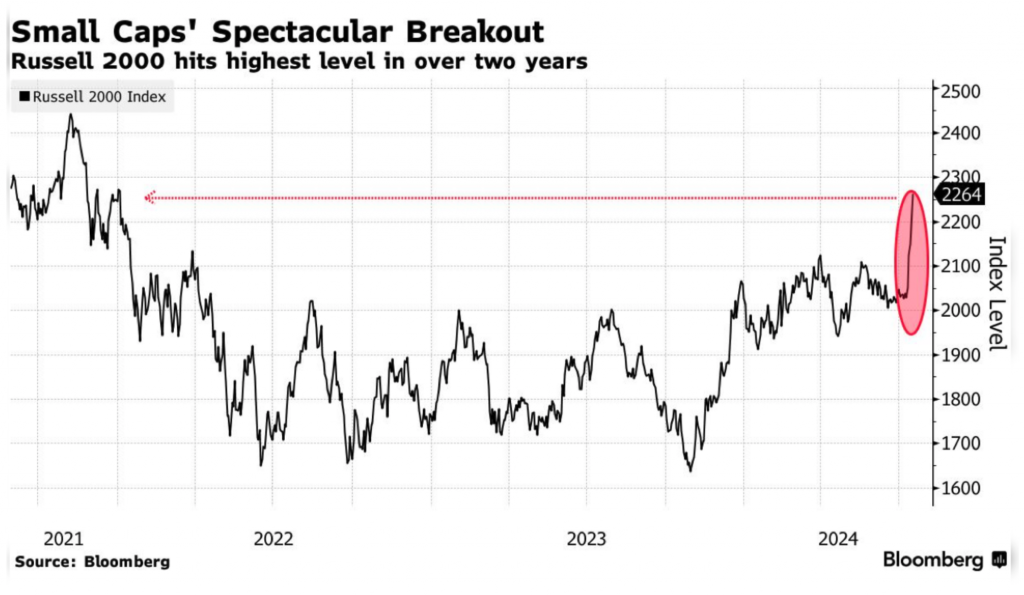02:52
Robert Chadwick
Hi everybody, this is Robert Chadwick with Global Mortgage Group. Thank you for joining us for one of our original webinars or our first webinar on providing mortgages in Dubai foreign nationals and Dubai expats that are looking to purchase in the market. I'm proud to have Khurram, you want to turn your camera back on? I'm proud to have Khurram Asif with us. Khurram is our country manager for Dubai. He is probably the biggest expert when it comes to providing mortgages foreign nationals and expats to purchase or refinance properties in Dubai. So, Khurram, thanks for joining us. I don't know if you have anything to start out with. The presentation will go with discussing Global Mortgage Group and our capabilities, not just in Dubai but internationally. And then Khurram will come in and he will discuss the specifics of divide mortgages.
04:07
Khurram Asif
Khurram, thank you, Robert, thank you. It's a pleasure to be on the show with you.
04:12
Robert Chadwick
Okay, so with that, I'll start the presentation. There is a chat box or question and answer box on the zoom call. If anybody has any questions, we'll address them at the end. Whether it is for Global Mortgage Group, for America Mortgages, or about purchasing properties in Dubai and Dubai mortgages, just feel free to put it in and we'll address them all at the end. In the chat box there is a link to register for an appointment with Khurram if you would like to arrange a time to speak with them or with somebody with America Mortgages or Global Mortgage Group as well. So with that said, I shall start.
04:59
Khurram Asif
Excellent. Thank you, Robert.
05:06
Robert Chadwick
So Global Mortgage Group is an international brokerage specifically for investors to purchase, refinance, bridge, whatever it may be, for global real estate. We are based in Singapore. We were originally founded in 2018. We are backed and originally invested in by two korean banks and we provide mortgage loans for investors and expats in a variety of countries. Our biggest market by far is the U.S., where we are a direct lender. However, we also offer it in the UAE, as you'll soon see, UK, Australia, Japan, Thailand, Philippines, throughout Europe. And we have recently just launched Central America, Mexico and South American loans. So our goal is to be able to provide any international investor a one source stop when it comes to mortgage financing in Singapore, we're quite unique.
06:19
Robert Chadwick
We only provide asset based mortgages, so a property is worth x and we'll lend up to 80% normally based just on the value of the property. Besides Singapore, we do that globally. Last year, just in Singapore alone, we funded over 400 million in these transactions. I think what most people associate when they think of mortgage financing, they think of banks. However, as everybody is probably aware, banks are, what I like to say, broken. So we like to find alternative sources to financing. Certainly if a bank is a viable option, normally it is the cheapest option, but it's not always the easiest option. So our global network tries to curate funding sources from private lenders, family offices, wholesale lenders and institutional funds.
07:21
Robert Chadwick
Our loans tend to be more bespoke to the client and tend to, in most cases, especially with Global Mortgage Group, tend to be larger transactions. So our international residential capabilities, certainly the U.S., I'm sure most of the people on this webinar are very familiar with America Mortgages. We are by far the industry leader when it comes to providing foreign nationals and expats financing for U.S. mortgages. We also provide mortgages in Canada, Mexico, UK, Spain, Italy, France, Portugal, Dubai, Singapore, Hong Kong, Philippines, Thailand, Japan and Australia. If you have the option or you have the availability to purchase a property in a country that's not listed, you can always reach out to us and we may be able to secure some type of financing. So one of our biggest divisions is our international bridge lending.
08:34
Robert Chadwick
These are short term, twelve to 24 a month asset backed loans based purely on the value of the property and not the borrower's finances. Now, this is especially handy when it comes to being able to access financing quickly and easily. Because we go only off of the value of the property and not the financials, we can do these transactions normally from start to finish in one week. In the countries that we operate quite frequently is us, Singapore, Canada, UK, Hong Kong, Thailand, Philippines and Australia. So we have other types of financing that we're able to do. And a lot of this has to focus around being able to provide financing for what would be considered high net worth individuals. So we can do share financing in most countries. We can do remittance.
09:41
Robert Chadwick
If you're in a country that may have difficulty moving funds. We have aviation and vessel financing. So with that said, I will hand this over to Khurram. And he can go over the capabilities for the Dubai market. It's an exciting market, as Kram can surely tell you, and I'm excited to learn more about it myself. So with that said, Khurram, thank you again and I will give you the floor.
10:11
Khurram Asif
Thank you, Robert, for that lovely introduction. I'm very happy to be part of GMG and represent the Dubai market in that perspective. Now, as everybody knows, in the last 20 years, the Dubai freehold market has gone skyrocketing heights from when they first launched the initial bid, and today, where we're one of the leading cities in the world offering freehold ownership on properties, foreign ownership, and at the same time offering also non-resident mortgages to clients who may not necessarily be living here or earning here. I'll get into the details, but the bullet points for such an interface are the most important. Any client applying for a mortgage to a property in Dubai, to purchase a ready property in Dubai does not need to provide us with a credit report or tax returns from their home country.
11:06
Khurram Asif
So unlike most of the other major cities where credit reports and tax returns are part of the documentation, one of the major documentation for mortgage approval. If you're borrowing something in Dubai for up to 5 million dirhams, you do not need to give us a credit report from your home country. We don't want to even see your tax returns or how many taxes you're filing or whatnot. It's quite straightforward. The income in your home country, or even in any other country that you work in, other than Dubai, other than UAE, is accepted for a mortgage. We have mortgage facilities that can cover all seven cities of the UAE. We have seven cities, they're referred to as seven emirates over here. But basically there are the seven cities, Abu Dhabi being the capital and Dubai obviously being the main metro business center.
12:05
Khurram Asif
We have mortgages available for all these seven cities. And being a non resident who is earning outside the UAE, not landing their salary or income in a bank here, possibly even living here temporarily, but still earning outside, can avail up to 65% finance for a ready property. Anything that's ready or going to be ready in the next 60 to 90 days can be mortgaged. We can acquire a mortgage approval, wait for the handover and then finance 65% of it, which is a really good number, a great incentive for non residents. The moment you tell them that you can pay just 35% down payment and the bank covers everything else, it gives them two things. One, it gives them a sense of security that there is a local bank in Dubai taking over the majority of their investment.
13:05
Khurram Asif
Secondly, it also gives them a chance to enjoy absolutely tax-free rental income. We have no taxes in Dubai on property acquisitions, so you could buy a property here and not pay any sort of federal tax or property tax on it. Being a non-resident, if you're buying for investment and you take a mortgage from a bank, you do not pay any extra taxes on the mortgage facility other than the initial one-time charges of the bank and the yearly interest that's agreed upon. And most importantly, when you rent out that property, the rental income comes net 100% to your account in Dubai, which in a majority of cases helps to pay the mortgage back. So a typical non-resident living in Europe or Africa, any part of Asia, anywhere, just needs to pull down 35%, and get the mortgage through our company.
14:04
Khurram Asif
We also have a short-term and long-term rental division that takes care of the asset in case you want our assistance to rent it out. Once we've mortgaged it, the rental income here comes on either a quarterly, yearly or sometimes half a year income. It goes straight to your mortgage account with the same bank from where we've arranged your finance. And in effect, it pays your mortgage payments. It also helps you pay the yearly community fees on your asset. And at the end of the day, it still leaves something to go back into your pocket. This is the program we have for non-residents who are earning outside Dubai. We have a huge back office here, which is no less than a bank itself.
14:51
Khurram Asif
So the moment you engage our services at GMG, we don't just pick up your documents and send them to any leading bank or approving bank. We have our analysts in the office who review your documents. They do their assessment and within 24 hours we can give you a 99.9% indicative idea of how much mortgage eligibility you have, and what you need to make it more or less. Our office can do that for you, even before you pay any of the bank login fees or any other sort of processing fees. Once you're satisfied with our result and you want to go ahead, then we ask you to pay the one-time bank fee to log in the case, which is a minimal amount in Dubai, considering the property prices right now.
15:43
Khurram Asif
And we endeavor to finish everything between 30 to 45 calendar days. I'm talking about the application to the collection of keys to the property. This sort of facility applies to already properties, whether you're purchasing from a property developer or whether you're purchasing from what we call here, the secondary market, which would mean that, for example, I've bought a villa from a developer and now I'm reselling it on the market. And you want to buy it. That would be a secondary sale, or there would be a primary or developer sale where you buy from the developer. The facility applies to both. The maximum repayment as of now in Dubai for a mortgage is 25 years, up to the age of 65, whichever comes first. So if you're 40 years old when you apply for the mortgage, you can get 25 years to pay back.
16:39
Khurram Asif
If you're 45, you get 20 years and so on. Obviously, like any banking structure, we have partial prepayments and early settlement options, so nobody is locked in for 25 years or 20 years. You can get out of the mortgage at any time from 90 days to two years to five years, depending on the market, depending on your discretion or what you want to do with the property. Obviously, at the exit point, you do not pay any of the preceding interest charges that you would have paid in 25 years. We have a very minimal fixed fee of only 10,000 dirhams.
17:18
Khurram Asif
So at any point in time, if you want to sell your property or close the mortgage, or you have extra funds and you decide you don't want to continue the mortgage and pay interest to a bank, you can approach the bank or approach our offices, and we will arrange your early settlement. You will only pay the principal outstanding and a fixed fee of 10,000 dirhams, which is by far one of the lowest early closure fees as compared to any major city around the world. We also have loan programs or mortgage programs here that can be structured purely on rental income.
17:57
Khurram Asif
Those are a few preferential case-to-case basis scenarios, but we've done that for a lot of investors, for a lot of non-residents who may not have the sufficient income, or who may just have a portfolio of other properties in Dubai which give them enough rental income, we can use that as collateral and we can arrange a new mortgage for them to purchase new properties. So, in effect, you are using your existing portfolio and the rental income to increase your property spread in Dubai. Thank you for that. What kind of people can borrow from us? Needless to say, the citizens of the country, the UAE citizens, are on the highest slab and can borrow up to 90% of finance on ready properties. Next in line come the residents who live and earn in this country.
19:01
Khurram Asif
They're not UAE citizens, they are foreigners, like myself, like a lot of other people here. The UAE is a multicultural country, and Dubai alone has more than 140 different nationalities living and earning here, other than the citizens. A non UAE resident, someone from another country who chooses to live and earn here, can borrow up to 85% finance on a ready property. Next come the non-UAE ex-pats who are living in other countries. They're living overseas. They've come to Dubai. They like the place. Or they heard about Dubai, they've heard about our tax free rental incomes, our tax free haven, and they want to invest here. They can borrow up to 65% finance, as I mentioned a few minutes ago, we do not require borrowers to have a UAE residency necessarily, and we absolutely do not require them to have a bank account in Dubai.
20:00
Khurram Asif
As part of the mortgage process, the lending bank also opens a savings account for the borrower. Through this account, the borrower can make his mortgage payments, either transferring the funds himself from his country, either relying on the rental income checks, which is 90% of the scenario here. This account can also be used for minimal amount transactions, shopping. You get an ATM debit card, international ATM debit card and online banking access. So you can be living in any other part of the world and monitor your mortgage, your rental income, your repayments, everything on your iPad, without necessarily traveling to Dubai. Process wise, again, I've done mortgages in a lot of other cities other than Dubai. Also. Obviously, we're a big group where spread over all major cities.
20:58
Khurram Asif
As Robert explained, I can tell you that our mortgage process here is one of the shortest turnaround time, if not the shortest, but one of the shortest as compared to all major cities. Within 24 hours, our back office gives you an assessment. Once you submit your documents, we can give you a pre-approval, which is an in principle approval, within 48 hours. It's not your final approval, but it's an in principle approval based on your income, demographics, the price of the property, things like that. Once we've got the whole set of documents and you've selected your property, then it's a 30 to 45-day process. The mortgage process, in simple words, has three stages in Dubai, the pre-approval, as I mentioned just now. Then we have the property evaluation by the bank.
21:51
Khurram Asif
Like any major city, the bank here evaluates every single property where they're surveyors, irrespective of what your buying price is. Maybe you're buying at a really good price. Maybe you've managed to get a distress deal, or maybe you're buying at market price. Irrespective, the bank evaluates every property that you're buying and the bank lends you the finance percentage, whether it's 65 or 75, 85 or 90. They lend you that on the lower value between your buying price and the bank evaluation. Once we've done the evaluation comes the final stage, which is the actual physical mortgage contract signing. That's when we request the non resident client to visit Dubai to sign the mortgage contract. With that, we also get the account opening signed.
22:41
Khurram Asif
We get your account opened in the same bank as I mentioned, and at the end of 30 to 45 days, you can meet the seller of your property in one of the government trustee offices to register the title in your name, the bank makes the payments to the seller and the seller transfers the property title to your name and effectively, you collect the keys to the property. We also have some exceptional cases on a case-to-case basis where we have managed to get special approvals from lenders here to complete the entire mortgage process while the buyer is in his home country, Orlando, or any country where it's earning. There are circumstances, sometimes medical circumstances, economic circumstances, or anything else that's stopping a client from coming to Dubai. But it doesn't stop the mortgage process.
23:33
Khurram Asif
It always helps to know that much in advance from a client that he or she will not be able to make it to Dubai to sign the mortgage contract and do the account opening. We can then apply for special approval with the lender to process the entire thing remotely with a certified person or manager in the client's country who will go document sightings, and things like that. It's not part of a regular policy, but we've managed to achieve that for many clients. Case to case basis. Eligibility the most important question for any client how much loan can I borrow? Our loans minimum loans in Dubai start from 250,000 dirhams. So if you're buying a property for 500,000 dirhams, you could easily take 50% from us or 60%. If you're buying something for 400,000, you could still barely make the benchmark.
24:31
Khurram Asif
But if you're buying for below that, it may not be easy to get you a mortgage approval. Most banks here would prefer to book a minimum case of 250,000 dirhams. It just makes business sense for the bank and also makes financial sense for the client to pay four or five one-time costs to the bank, one-time charges before he takes the mortgage. There's no limit to the maximum amount of mortgage you can borrow. We do have a product profile which says up to 500 million dirhams. But we've booked cases. We've booked cases depending on the value of the asset, we bookcases for even higher than that. So as such, there's no hard and fast rule.
25:15
Khurram Asif
If you're planning to buy a residential building or a complex of villas, which will bring you a very high substantial rental income, and the pricing goes over 500 million, we can still look at it, we've done it. The minimum age, of course, to borrow a mortgage in this country is 22, because the legal age to get work in most major cities is 21. So we would expect a client who's 22 to have at least six months of work experience before we lend him a mortgage, and the maximum age is 65. Beyond 65, the only mortgages that can be extended are to the UAE nationals, any expatriates, foreign nationals, non UAE, all have to have closure by 65. The type of people who can get a mortgage are obviously the easiest ones are the salaried profile. All banks love salaried clients. Fairly straightforward cases.
26:14
Khurram Asif
Next come these self employed clients who have an array of businesses and different incomes. So it requires a little more structuring. Everything that our back office does for the client before we submit the docs to the bank. And then we've got a high net worth individuals who aren't really relying on a monthly income, but they have an overall portfolio giving them really high income. We actually are experts in that kind of case and structuring those along that line with the high net worth. Every now and then we also receive clients referred to as peps, which translates to politically exposed persons. So we do have solutions for peps. Clients who directly work with the government or indirectly are connected to a government office in their country via a family member or a spouse, some even via heritage.
27:03
Khurram Asif
I had a client whose father used to work as a member of parliament, so he was classified as a pep. But we get those approvals. We have solutions for almost anything under the sun when it comes to the minimum work experience, unless you're 22 years old, if you're older than that, the bank doesn't really focus on your minimum work experience. What they look at is your flow of income. When I say the flow of income, the banks don't even expect you to have an x amount of salary when you're a non-resident. For residents who have income in this country, there is a minimum salary. But for non-residents, we would like to look at your last six months' bank statements to see your income, even if it's variable, to see your spending habits, and to see the average balance you maintain.
27:49
Khurram Asif
That's what a bank would look at, and not specifically a fixed number of income. Blood relations and spouses we have clients at times who don't make the marks on single applications, or they want to borrow higher than what they can on a single application. Blood relations or spouses are allowed to be co-applicants or co borrowers. In this case, as long as there's a blood relation. Could be parents, siblings, brothers, sisters, sons, daughters, or spouses. You could. We could use you as a co-borrower if you also have income to declare, or bank statements that show some income that we can add to our main applicant, we almost finance anything that's real, anything that you can touch and feel. We finance can be a plot of land, townhouses, villas, apartments, the hot favorite in Dubai, and apartments for investors.
28:48
Khurram Asif
We also finance mansions and towers, and we also do commercial and retail. Like any market, the majority of business happens on the residential side. But in the last two years, commercial has picked up a lot in Dubai and hence the banks have adapted to that. So we also have commercial and retail finance solutions. What you're seeing is one of the key premium properties in Dubai. Obviously, there are many properties in Dubai for sale at many different levels. But what we can see on this slide is one of the signature villas on the Palm Jumeirah Island, the world's first man-made island. We all know about that. And we've got two other islands now that are gearing up to also offer properties. But the palm as such, the first palm Jumeirah, is a full, complete, and mature community.
29:42
Khurram Asif
We've got units, and assets there, starting from 5 million all the way up to 150 million. As you can see on this slide, this is a signature villa developed by an award-winning international group called Select Group. Their major emphasis was in the UK, where they started, but now the majority of their projects are in Dubai. All of them are luxury, ultra-luxury. And this is one of them. As you will observe on the slide, even at a high price of 150 million, we're looking at an ROI of approximately 6% to 8% on this, six to 8% ROI on this sort of asset. The interest rate for a mortgage, is not more than 7%, somewhere between 6% to 7%.
30:27
Khurram Asif
And even on an asset of this value, the maximum loan period of 25 years applies as long as you're below 40 when you apply for the mortgage. Next is another ultra-luxury community in Dubai. It's almost 20 years old, one of the first luxury communities that Dubai started when they launched the freehold market here. Foreign investments. It's called the Emirates Hills. It's an array of ultra-luxury, golf-facing golf courses, and facing villas. 99% of all the villas here have inbuilt elevators and they go up to two or three stories high. The one we have on display here is approximately 300 million dirhams. And for this sort of asset, we can offer 50% finance.
31:20
Khurram Asif
So if you are interested in buying something in this range, we could get you a 50% mortgage from a bank where you put down only 150 from your pocket. Again, the same tenure of 25 years. And even the interest rate, unlike most major cities around the world. The interest rates in Dubai do not fluctuate based on the loan amount you're borrowing. So you could borrow 5 million from a bank or you could come and ask for 100 million. The interest rates don't necessarily fluctuate with the price of the asset. They're based more on the client's profile and source of income and the comfort level banks have with them. To the next slide in a moment. And here's something on the other side. On one side we have ultra-luxury assets in Dubai, and mortgages available for those.
32:28
Khurram Asif
And then we also have lower price units in the most popular area, called Business Bay. It's the business hub of Dubai. It's what it says by name. It's mainly comprising office towers, commercial buildings, and also a lot of residential buildings. 15 North Side Tower, the one you see here, is one of the most popular residential towers in Business Bay. Very good ROI when it comes to short-term rentals in this asset, we can even look at 10% to 12% per year net, which is unbelievably high compared to any other city. For this sort of unit, we could offer up to 65% to 70% mortgage. Also, when it comes to the bank financing bit, they don't only look at the client profile or the asset price, but nowadays they also focus on the ROI.
33:21
Khurram Asif
So if we show them the ROI numbers of other units in the same project, at times we're able to push for a higher mortgage amount. It's a combination of things that our back office does before the application goes to a bank. To answer the age-old question which people ask at times like, why should we come to a mortgage broker and not just go to a bank? Because when you go to a bank, they will tell you policies. When you come to us, we will tell you solutions, not policies. Anybody can get the policies online. We give solutions the same tenure of 25 years. As you can see here, whether you use it for end use or whether you put it out on rent through our other offices, the ROI is about 10% to 12% on short-term rentals in this area.
34:13
Khurram Asif
We also have a very good referral system in place with GMG higher than any other market, higher than London. I can tell you that because I have referred cases there. Once the case is booked and we have received payment from the client, within 48 hours, GMG is happy to give a 20% kickback or referral fee to the referring person. Needless to say, this stays strictly between the referring person and GMG. At no point does this come on record in front of any client? Thank you. I think this would be the end of this presentation. I think Robert's back on.
35:00
Robert Chadwick
Yeah. Thank you, Khurram.
35:02
Khurram Asif
Pleasure.
35:03
Robert Chadwick
Yeah, super interesting. I know I took down a lot of notes myself because I'm not really familiar with the market, but maybe you can help me with a couple of questions that I have, and then we'll get to the question and-answer session, which we have, actually, in quite a bit.
35:25
Khurram Asif
Absolutely. Really. Good question, Robert. So, the majority of the banks nowadays are offering fixed rates and also variable, but they aren't very interesting. The variable rates are not really interesting, and I think they're purposely being calculated in such a way that most clients are inclined to go for fixed rates. The fixed rates also are low. They're not very high at the moment. Last year this time, if were speaking, were close to 7%, but currently, we are looking at something like 3.8%, 3.9% fixed for three years. Three years is the most popular period over here. For fixed rates. We have one year. We have three years. Some banks offer five, and one or two banks also offer ten years. But the favorite pick is always three years with most clients that we see.
36:27
Robert Chadwick
And is it always principal and interest, or are you able to do interest-only loans?
36:31
Khurram Asif
Always. Always principal and interest from day one. We stopped doing interest-only loans about a decade ago, so now it is purely principal and interest.
36:40
Robert Chadwick
Okay, another question. Is there a way to structure it differently by, say, opening up a company in Dubai to be able to get more favorable terms?
36:54
Khurram Asif
Okay, that's not something we recommend to a client if he's only doing it for the purpose of getting a better mortgage. For opening a company in Dubai, which would make you self-employed, you would need to have at least a minimum of twelve months of banking operations in your company account. At a minimum, three employees are on your company's payroll and a properly structured business. And that with all that, it wouldn't take you more than 70 or 75% finance. The max you could get is 70% to 75%.
37:32
Robert Chadwick
Okay, so a straightforward transaction.
37:35
Khurram Asif
Absolutely.
37:37
Robert Chadwick
The citizenship or residency is the best way to go?
37:42
Khurram Asif
Absolutely.
37:43
Robert Chadwick
Okay, another question. And again, apologies if you covered this, but no. Is there a debt-to-income ratio or how does that qualify? Is it qualified on debt only in Dubai, or is it qualifying on debt globally? How does that work?
38:00
Khurram Asif
Okay, so if you're a resident earning inside Dubai, then your debt burden ratio, as we call it, a DVR, is a max of 50%. You cannot pay more than 50% of your fixed income towards liabilities in the country. But for non residents, there is no hard and fast DBR in place. So a lot of times non residents show us income. We also see debts in their bank statements, we see other mortgages, we see credit card payments. But again, as I said, it's not just about the income of non-residents, it's also about the average balance. Maybe someone with debts. A non resident with debts maintains a higher average balance than someone who doesn't have debts but spends his entire income and has no balance. So the bank looks at it from this point of view for non-residents.
38:49
Robert Chadwick
makes sense. Also, you had mentioned earlier, that going to a mortgage broker that can actually structure this properly rather than going to the bank is just going to look at it and say rejected or approved, right?
39:01
Khurram Asif
So, well, that's absolutely the reason why we have a lot of traffic, a lot of foot falling here, because if you go to a bank, we have about 15 banks in this country offering mortgages, out of which 10 are the really active ones, and they are too busy to structure cases. They like, as we put it in sales, the low-hanging fruit. So if you go to them straightforwardly, and this is my income, I have, I don't have many liabilities. I want a mortgage. They're happy the moment they see that this requires structuring and extra work, they rather not onboard such a case, than spend two months on it and then say no. But that's when we come into the picture with the moment a client comes to us within 24 hours, we know exactly how to structure this case.
39:45
Khurram Asif
And we come back to a client from our office and tell them like, look, you have this income, but we need to see this or you need to reduce a bit of this. We know how to structure the cases.
39:55
Robert Chadwick
Excellent. And you know, and I can say personally, working with you for over the last couple of years, I don't care what time of day I message you'll reply. So, I don't know if it's just me, but I really, think you're an absolutely fantastic person too.
40:11
Khurram Asif
Thank you, Robert. It's very kind of you, but I will share a small thought on this, what you just said. Thank you for your kind words. The thing is, I was in Canada some years ago and just to humor myself, I applied for a mortgage facility. As a non-resident, I selected a property with some family members and we applied for a mortgage facility. We started making inquiries. We didn't apply for the application. It took a whole week for the mortgage broker there to come back to us and ask us the essential first questions before we could even give the documents. So this stayed in my mind because were pretty disappointed at the turnaround time. This is obviously much before I even knew GMG. Things changed drastically once I connected with you under the group.
40:55
Khurram Asif
So I always held this in my mind as a key factor. Like whether the answer is yes or no. Don't waste time. Come back to the client as soon as possible. Because clarity is everything in this business.
41:07
Robert Chadwick
I absolutely agree. So, okay, so let's get to the questions that. Again, thank you everybody for joining. There is in the chat box a link if you want to schedule an appointment with Khurram directly or with any of the other loan officers handling a variety of countries. So first question, I guess that would be for me. It says, do you offer mortgages in New Zealand as well? And yes, we can provide New Zealand mortgages. There are certain restrictions on qualifications based on your passport in New Zealand. But please reach out to us and we can assist. Next question. Am I able to get equity out of my property in Dubai? Can GMG help? Khurram?
41:57
Khurram Asif
Absolutely you can. Equity release is one of the major products. After we have a 1st-time mortgage, we have the secondary market as I explained. And we have refinance or equity release. We call it equity release here. The bank will evaluate your property on today's market value. And up to 50% of that can be given to you as cash in hand. It's not. It's not a hard and fast rule. But at some point, the bank will want to know what is your other income other than just the property. If you're one of the investors who only has a property giving you rental, we can still make it work. But 50% is the cap on equity here.
42:39
Robert Chadwick
Thank you. Next question. Are there any specialized mortgage products from GMG designed specifically for international investors interested in the Dubai real estate market? Khurram?
42:51
Khurram Asif
Right. So most of the part of the presentation obviously covers this for international investors. But in short, you can borrow up to 65% finance. As an international investor, you don't need to have residency in this country. You don't need to live here. You surely don't need to have income here. You could be someone who just saw Dubai on a video with someone and liked something. Maybe you never came to Dubai. We can still do up to 65% mortgage by GMG Dubai.
43:21
Robert Chadwick
Fantastic. And Khurram, if say somebody wants to get pre-approved for a mortgage which is probably the first thing that they should do in any country. Are you able to refer them to realtors that you've worked with in the past that, you know, are fantastic like yourself, to work with? I mean, is that an option that you're able to provide as well?
43:43
Khurram Asif
Absolutely. So, obviously, in our line of work, we know a lot of realtors, but I've got five very reliable realtors in different communities in Dubai. And every now and then I get this request from a client whom I've given a pre-approval to, saying that I'm not finding the right realtor. I want a specialist. I then refer them to a specialist from my side if required.
44:07
Robert Chadwick
Fantastic. Okay, next question. Is it true that Dubai is a completely tax-free market for property owners? Very good question.
44:16
Khurram Asif
Absolutely true. I've been living here for 48 years and I'm a property owner for a good part of 15 years now. The only thing we pay is our community tax to the master developer, which is a norm in any part of the world. We do not pay any sort of federal tax, income tax, or nothing. I've got one property rented out. We get rental income on that. It all comes in our pocket. We're free to do what we like with it. There is no compulsion of any kind. No tax, no hidden taxes, no fees named in some other way. Nothing.
44:51
Robert Chadwick
That's fantastic. Unfortunately, I mean, fortunately, and unfortunately, me being an American, I don't have that luxury, but I think almost everybody else does. Next question. Why Dubai? Why should investors purchase a property in Dubai as opposed to other major cities?
45:11
Khurram Asif
Okay, so obviously, reiterating again on the tax, any major city in the world will offer you the best properties. They'll also offer you mortgages. I mean, GMG themselves do mortgages in all major cities. We can get you up to 75% to 80% also in some cities. But there's no running away from the taxes. The moment you acquire a property under your name, you are liable to pay yearly taxes on it. There are some cities, major cities, where the more your property appreciates, your taxes go higher, even on capital appreciation, you pay on that also. So that's one major reason we can give undisputed reason, we can give anybody to come to Dubai, buy a property, and just enjoy a tax-free life.
45:56
Khurram Asif
The other most important reason where you might wonder why people are buying property here and a lot of them moving here, is our security. This is one of the most secure countries in the world. Abu Dhabi, which is the capital of the UAE, was ranked number two recently in a recent international poll. These are not polls conducted inside the country. They're international polls. We're one of the safest places in the world to invest property in, to come and live in, to start a life with your family here, to educate your kids here, and so on. I mean, these are the two important things that any investor or any buyer will look at. Safety and tax-free.
46:37
Robert Chadwick
Fantastic. Okay, next question. If you have a Dubai golden visa, how much can you borrow?
46:45
Khurram Asif
In terms of borrowing? It doesn't make any difference to the bank because the golden visa is something that just strengthens your demographic when you're applying here as a non-resident. But yes, the compliance process of the bank, is checking your background and things like that. If you're a first-time buyer or first-time borrower, that definitely gets shortened by 50%, because to even get the golden visa, there is a stringent compliance process in this country. So if the government's gone through that and already given your golden visa, the bank has no reason to waste more time than required on checking your background. But in terms of lending or eligibility, as of now, it makes no difference.
47:26
Robert Chadwick
Does it make a difference on the loan to value?
47:30
Khurram Asif
Unfortunately not.
47:32
Robert Chadwick
Okay, next question. Do I need to have a local partner who owns 51% of the LLC in Dubai if I want to buy the
property using the LLC?
47:46
Khurram Asif
Okay, so this is a question with two questions in it. One just for general knowledge for everybody, the days of having a mandatory local sponsor are behind us. So in the last two years, the government has changed that rule, and today you can walk into Dubai and acquire a business license, 100% in your name, and 100% ownership. If Robert Chadwick comes here and starts a business, the license will say, Robert Chadwick, 100% shares, owner or proprietor, whatever you like. So that requirement is out completely. Number two, you can use this license to buy a property. Obviously, the developer or seller won't care. They register the property in your license name if you need it. But banks do not offer mortgages to an asset that's registered under a company here.
48:37
Khurram Asif
So during the process, or maybe after buying the property in a year's time, you came to a bank looking for equity. They would require you to first transfer the property back into your own name and then give you a mortgage. But if you just like to buy on cash and keep a property under a company name, it's possible without intervention from any local sponsor.
48:58
Robert Chadwick
Very interesting. Thank you. Next question. What are the interest rates for these mortgages for non-UAE residents? We are Singapore residents, but Indian citizens.
49:10
Khurram Asif
Okay, so the interest rates for people who have no, income in this country start from 5.8% fixed for three years, 5.8%, and go all the way up to 7% depending on the case and the technicalities concerning the buyer. It doesn't matter even if you have a golden visa. I have clients who have started a small business license here, a company, and they have visas from the company. As long as you're declaring your income outside the UAE, you will always get the non-resident rate. You won't get the resident rate.
49:46
Robert Chadwick
And what is the resident rate? If you are living?
49:48
Khurram Asif
3.89% starts from 3.89%. For individuals working on a salary in this country. Ironically, you could be living in Singapore, but if you're still employed with a company here and they land your salary into an account here, you could get 3.89%. Your physical residence doesn't matter to the bank. The only thing that they care about is your income. Where are you paid? In UAE or outside?
50:14
Robert Chadwick
And curious. Obviously, we've seen interest rates rise across every market. After COVID, how low were interest rates in Dubai?
50:26
Khurram Asif
Well, there was a time when it was 2.2% also.
50:34
Robert Chadwick
Okay.
50:35
Khurram Asif
Yes, but today, considering the inflation rate globally and even in Dubai, and considering the Fed rate and so many other factors, that just wouldn't be a practical rate now. I would imagine 3.89 is still a very good rate today. Absolutely lower than most major cities. So 3.89% fixed for three years.
50:57
Robert Chadwick
Okay, fantastic. All right, next question. Are we able to purchase an investment property in Dubai, and how can we go about finding the tenants? So I think this kind of leads to the services.
51:10
Khurram Asif
Correct. So firstly, yes, you can absolutely purchase an investment property. Two, you can also get a mortgage on it, up to 65% if it's a ready property, and three, if you choose to use our services, our other division can also help you rent out the property, and they can be the property managers for the property, maintaining, cleaning, short term, long term, whatever you need. We have an office that takes care of all these things.
51:40
Robert Chadwick
Fantastic. Thank you. Is there an LTV? Is the LTV the only thing affected if you work for a startup in Dubai? I think that probably works for any company.
51:55
Khurram Asif
Right. So whether you. Well, if you work for a startup. Okay, so you're not. What I understand is you're not starting the startup, you're working for a startup. So in this sort of scenario, the bank would want to look at the validity of that company first. So you could be three months employed, but we could still give you a mortgage if the company was formed three, or four years ago. But if someone started a startup, initiated a startup six months ago, and you came on board three months ago, it could be a little challenging because you would come under a salaried profile and the entire crux of the mortgage lies on you getting your salary on time from a company that's operating more than two years at least, and is in a healthy position to keep paying salaries and not lay off stuff.
52:40
Khurram Asif
This is the credit point of view of any bank.
52:45
Robert Chadwick
Makes absolute sense. And I think it's probably seemed more lenient in Dubai than it is in most countries when it comes to it.
52:52
Khurram Asif
Absolutely is. Another thing I'll quickly add is our mortgage eligibility process, or the whole tat of our mortgages is really simple for one major reason. Again, I'm just repeating the same thing. We don't have taxes here, so you don't have to give us your tax filing reports. We don't need to see, okay, you're earning x income, but you're paying y taxes. How much are you left with? It's very straightforward. In Dubai, this is your income, these are your liabilities. The gray area in between is your mortgage eligibility.
53:22
Robert Chadwick
Makes sense. Okay, next question. What is the outlook for the property market in Dubai? Is it already in a bubble?
53:32
Khurram Asif
No, we don't believe that absolutely. In fact, we don't even use the word bubble anymore because, in the last four years post the COVID issues here, we've seen substantial growth and expansion of properties. Here we have a lot of non-residents now coming to Dubai buying properties not just for investment, but making it a home, making Dubai their home. Anybody who randomly even connects to an online forum or picks up the phone to buy a property will realize after a month that this is a majorly undersupplied market. We have more buyers and less properties for sale. We don't see this as any sort of bubble. In fact, we see this as a universe. We see it as a never-ending universe that is getting better and better. There is very strong speculation and not, well, I wouldn't say speculation.
54:23
Khurram Asif
There are very strong reports from government entities that they are highly considering also giving UAE national passports to a lot of buyers and investors. There are obviously some criteria for that, but these are reports from government offices that are driving even more people. More and more people are looking to make Dubai their home and live over here. And if nothing else, the safety aspect I mentioned, that's just the cherry on Dubai. Everybody likes the safety.
54:51
Robert Chadwick
Fantastic. This is a little bit off-subject, but what do you need to get a golden visa? If you know about that?
55:02
Khurram Asif
Sure. If you can purchase a property for as low as 2 million dirhams, you can be eligible for a golden visa. Again, there are reports that this benchmark is coming even lower, to maybe 1 million very soon. It started with 10 million 2 years ago. Let me just put that in there. So two years ago, if you wanted a golden visa, your property should have been 10 million. And then it came to five, and today it's on 2 million, which is another reason that everybody is coming to Dubai. The golden visa is for a minimum of ten years, which means for the next ten years, you can stay in this country as a resident. No need for visa renewals, no need for medicals, blood tests, or anything. The golden visa also allows you to open bank accounts here, and get a driver's license here.
55:50
Khurram Asif
It also allows you to join any employer of your choice where you'd like to work. And if they hire you, all you need to make is a labor contract with them. And your golden visa is not connected to that employee. Even if you stop working over there, your tenure still goes on as long as you have the property. And I'll quickly add that for the golden visa, it doesn't need to be necessarily a ready property or a full cash property. So you could have bought a property for 2 million and borrowed 50% from us, and you could still get the golden visa.
56:22
Robert Chadwick
So just to clarify on the golden visa, if you said it's down to 2 million, you can finance a portion of that. You don't actually have to come in with the full 2 million cash.
56:34
Khurram Asif
No.
56:35
Robert Chadwick
Very, very interesting.
56:36
Khurram Asif
You could put down 40% - 35% as a non-resident, and we could finance 65 and still get you the golden visa. Luckily, we also have another division that manages golden visas, because obviously, it's the next thing on the menu. Clients ask about properties, then they ask about mortgages, then they ask about tenancy. And the next question nowadays is always, can you help me with the golden visa? We have a dedicated department only looking after golden visas and company formations.
57:04
Robert Chadwick
Fantastic. Definitely a turnkey service there. Okay, the last question, I believe. No, one more after this. So, 3.89% of borrowers buy income. What is the interest rate for those with income outside side of Dubai?
57:23
Khurram Asif
Sure. That interest rate starts from 5.8%, fixed for three years, and can go up to 7%. It depends on your profile, depends on how old or new you are in the job in your country, and also depends on the property price sometimes. But 5.8 is the bare minimum for non-residents, which is, again, a very good rate for someone who's not earning in this country.
57:50
Robert Chadwick
Okay, and last question before we end the webinar. The cost of a golden visa application. Can you maybe kind of expand on that? Seems to be quite interesting for a lot of people.
58:01
Khurram Asif
Sure, sure. I can give you a range because there are different costs for different demographics at times and different things. But it starts from 13,000 all the way up to 18,000. Between 13 and 18,000.
58:19
Robert Chadwick
Okay, perfect. Thank you. That will conclude our webinar for today. Khurram, as always, thank you for your time. We really appreciate it. Thanks, everybody, for joining. Again in the chat, there is a link where you can book an appointment with Khurram or with one of our loan officers globally.
58:45
Khurram Asif
Sure.
58:46
Robert Chadwick
So with that, Khurram, do you have any last parting words?
58:50
Khurram Asif
Well, firstly, I'd like to thank you, Robert, for the time and for organizing this. I want to thank the attendees. I can't see their names yet, but I'm sure I'll get messages, so I'll know. And finally, I would just simply say that if there's ever a time to buy a property with a mortgage, now's the time.
59:09
Robert Chadwick
Absolutely.
59:10
Khurram Asif
It's not tomorrow. It wasn't yesterday. It's today. It's now.
59:14
Robert Chadwick
Okay, Khurram, thank you very much. All right, everybody, thank you. We'll have another webinar in, I believe, in two weeks. You should be getting a notification on that pretty soon, whether it is focused on the U.S. or the global markets. So have a good weekend, everybody. Appreciate your time. Khurram, thank you again.
59:31
Khurram Asif
Thank you, Robert.
59:32
Robert Chadwick
Thank you, guys.
Disclaimer: This transcript is AI-generated, so kindly pardon any transcription or grammatical errors that may be present.












